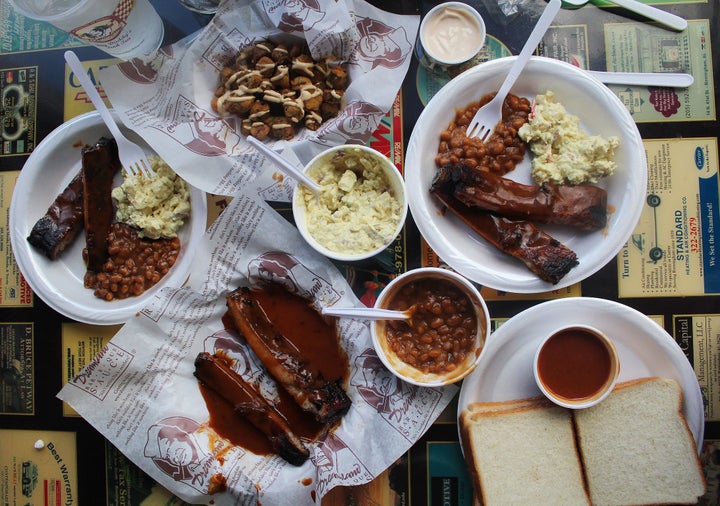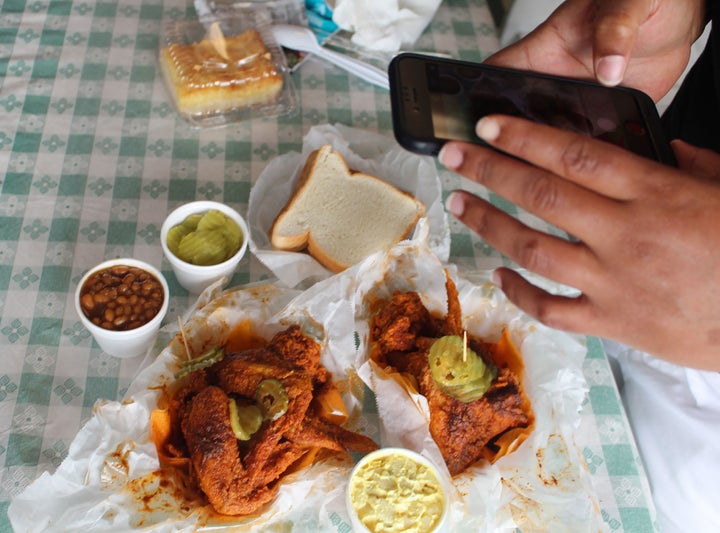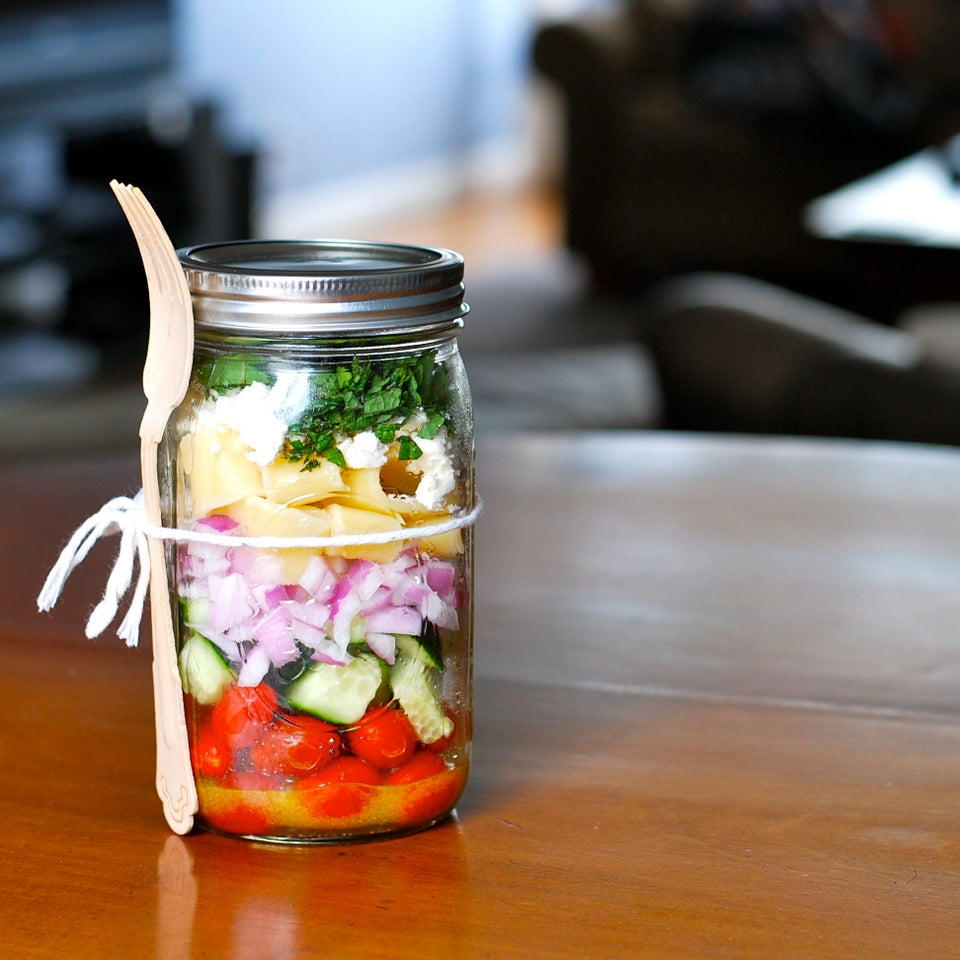A few years ago, I was working long hours in an international newsroom, fueled mostly by delivery salads from fast-casual chains like Sweetgreen, Chop’t and Just Salad. Like many of my coworkers at the time, I had a particular order from my salad chain of choice — the star quarterback, if you will, of my many deskside lunches and dinners. And it slowly sapped my paycheck one $13 salad at a time, a luxury not everyone can afford.
Other than tasting good and being reasonably healthy, I didn’t really consider these delivery salads to be remarkable until last July, as I was sweating at a picnic table outside of a shack built from corrugated metal in Key West, Florida, while eating jerk chicken made by a Jamaican man, all in the name of salad research and development.
I was with Aneesha Hargrave, Chopt’s executive chef, and Ali Banks, the chain’s research and development manager, on a road trip through the South, part of the duo’s annual journey somewhere in the world to gather inspiration for the restaurant’s upcoming “destination” salads.
Last year, Hargrave and Banks road-tripped through the American South, eating everything from the aforementioned Key West jerk chicken (we asked the pitmaster to load up quart containers of his famous sauce) to a collard green melt at New Orlean’s Turkey & the Wolf, Bon Appétit magazine’s best new restaurant in 2017. Past trips have included such far-flung places as Vietnam.

Eventually, the things that Banks and Hargrave eat on their travels make their way back to Chopt’s Manhattan headquarters, where they enter a complicated process of evaluation: Can we scale this? How much will this cost us to make? Does this even taste good in a salad? (Many of my suggestions on the trip were promptly canned. “Too soggy with lettuce,” Hargrave told me when I suggested a crunchy fried shrimp we ate in Savannah, Georgia.)
This finely-tuned machine of salad research and development is a big business, especially when you consider that specialty chains (a category that includes Chop’t and its competitors) grew by 15.6 percent in 2017, according to Technomic’s Top 500 Chain Restaurant Report. Sweetgreen’s valuation now exceeds $1 billion after Fidelity Investments closed a $200 million funding round in November.
“We always look at what our guests have asked for in the past—if they’re looking for more crunchy options, if they’re looking for more Mediterranean flavors, we start with that,” said Janani Lee, the chief sustainability office at Just Salad.
Just Salad also adds an element of real-time feedback to its research as a way of keeping its R&D process light, Lee explained to HuffPost. At Just Salad, stores will receive small samples of new items to suggest that customers try, then train staff to ask for feedback on the spot. (Most recently, the chain was testing a new supplier of dried cranberries.)
When considering new menu additions, Chop’t intentionally avoids ingredients that are too esoteric or too costly, instead focusing on something it calls “craveability,” creating salads that Hargrave calls “full-bowl worthy” due to their balance of color, texture and flavor.
“It’s something that you start eating and essentially feel like you cannot stop because it covers all the bases of delicious,” Hargrave said. Banks added, “You want to eat it as many times as you can possibly eat it so that you’re kind of sick of it, but also you’re going to miss it when it goes away. It’s that bittersweet ending.
“It sucks, but lunch in New York City is expensive. Cheaper options are usually things like pizza or something less ‘healthy’ than a salad.”
- Hayley Dier, who works as an accounts receivable manager for a photography company in Manhattan.
All the focus on research, sustainability, sourcing and transparency comes at a cost: With most made-to-order salad lunches easily exceeding $10 (and in some cases $15 or more), it’s decidedly a luxury that only certain people can afford—and even those who can don’t take the expense lightly.
“It sucks, but lunch in New York City is expensive,” said Hayley Dier, who works as an accounts receivable manager for a photography company in Manhattan. “Cheaper options are usually things like pizza or something less ‘healthy’ than a salad.”
The luxury aspect of a double-digit-priced salad isn’t lost on the restaurants themselves entirely though, as all of the major players in the salad game have stated that their long-term goal is to democratize healthy eating by making their products available at a lower price and implementing better food education in schools.
“We always want to make sure we’re really accessible to anyone who wants our items,” Lee said, noting that at Just Salad, the chain strives to always offer at least 10 menu items under $10.

“Our price point is going to be higher than something you would see at a traditional fast-food restaurant,” said David Menis, Chopt’s vice president of marketing. But, he added, that’s not necessarily a bad thing, given what you get. “We work extraordinarily hard to make sure that we believe we’re offering a fair price for the quality of ingredients that we’re putting forth.”
Still, some salad startups have potentially isolated customers in ways other than cost. When Sweetgreen and Tender Greens, an L.A.-based chain backed by Danny Meyer, went entirely cashless critics called the move classist and discriminatory in light of a 2017 survey by the Federal Deposit Insurance Corporation that found that 8.4 million households in the U.S. are “unbanked,” meaning they are either not eligible for a traditional bank account or choose not to have one. (Chop’t hasn’t entirely pivoted to the cashless model but did open its first cashless store last year.)
Banks insists that part of the beauty of the fast-casual lunch salad is the diversity of those who eat them, observing everyone from NYPD officers to people in suits to retail workers at Chop’t’s flagship 17th Street location on any given day.
“We like that. We don’t want it to be only a sort of expensive, elevated thing,” said Banks. “Salads should be for everyone.”
But until the price points drop some more, these chains have some work to do to make that a reality.
